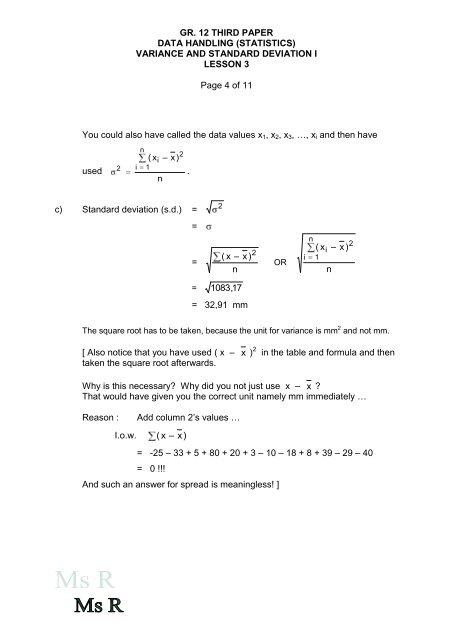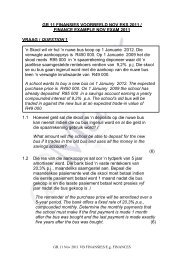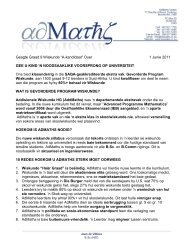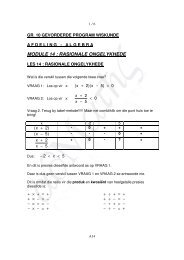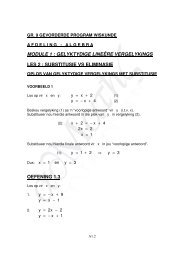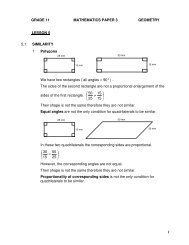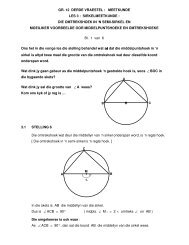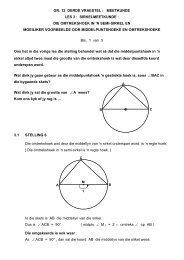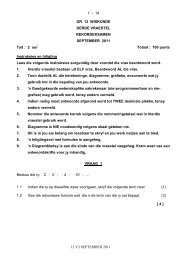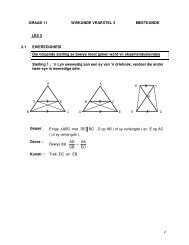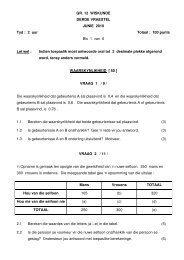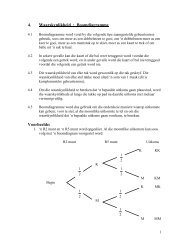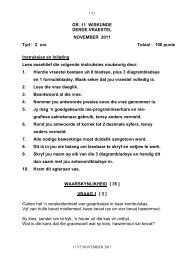In hierdie les hersien ons slegs die graad 11 variansie en ... - AdMaths
In hierdie les hersien ons slegs die graad 11 variansie en ... - AdMaths
In hierdie les hersien ons slegs die graad 11 variansie en ... - AdMaths
Create successful ePaper yourself
Turn your PDF publications into a flip-book with our unique Google optimized e-Paper software.
GR. 12 THIRD PAPER<br />
DATA HANDLING (STATISTICS)<br />
VARIANCE AND STANDARD DEVIATION I<br />
LESSON 3<br />
Page 4 of <strong>11</strong><br />
You could also have called the data values x1, x2, x3, …, xi and th<strong>en</strong> have<br />
used<br />
n<br />
2<br />
( xi<br />
– x )<br />
2 i 1<br />
.<br />
n<br />
c) Standard deviation (s.d.) =<br />
=<br />
=<br />
2<br />
2<br />
( x – x )<br />
n<br />
= 1083 , 17<br />
= 32,91 mm<br />
OR<br />
n<br />
2<br />
( xi<br />
– x )<br />
i 1<br />
n<br />
The square root has to be tak<strong>en</strong>, because the unit for variance is mm 2 and not mm.<br />
[ Also notice that you have used ( x – x ) 2 in the table and formula and th<strong>en</strong><br />
tak<strong>en</strong> the square root afterwards.<br />
Why is this necessary? Why did you not just use x – x ?<br />
That would have giv<strong>en</strong> you the correct unit namely mm immediately …<br />
Reason : Add column 2’s values …<br />
I.o.w. ( x – x )<br />
= -25 – 33 + 5 + 80 + 20 + 3 – 10 – 18 + 8 + 39 – 29 – 40<br />
= 0 !!!<br />
And such an answer for spread is meaning<strong>les</strong>s! ]


